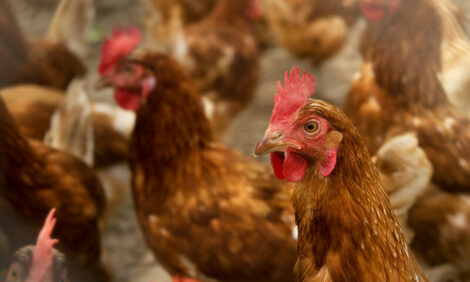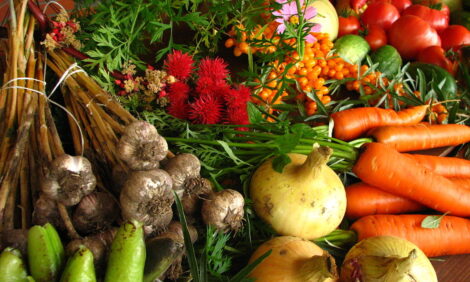



CME: Broiler Supply Growth Relatively Limited
US - Meat protein supplies in the US have declined in the first two months of the year and this has been particularly supportive of red meat prices, write Steve Meyer and Len Steiner.For the week ending March, total US beef, pork, chicken and turkey production was estimated at 1.727 million pounds, 2.8 per cent higher than a year ago. However, since the beginning of the year (nine weeks) US red meat and poultry supplies are estimated to be down 2.6 per cent.
The decline is largely due to smaller beef supplies coming to market as well as a less than expected increase in poultry output. So far this year beef production is down 6.9 per cent from a year ago as producers have brought 8 per cent fewer fed and non-fed cattle to market.
Cow slaughter last week was 16.4 per cent lower than the previous year. One item that has not received much attention is the performance of cattle coming to market. Average live cattle weights so far this year are up 0.8 per cent from a year ago while dressed weights are up 0.6 per cent. In part the increase is due to more steers and heifers in the mix.
Indeed, steer and heifer weights have been tracking below year ago levels for much of the last two months, a result of a colder than expected winter, the removal of Zilmax as a feed ingredient and the tight cattle supplies in feedlots.
Packers have had to bid up cattle prices in order to maintain a reasonable flow, and in doing so it appears that we have been pulling some of the marketing forward. For the week ending 15 February steer weights were reported to be down 0.9 per cent from the previous year while heifer weights were down 1 per cent. Steer and heifer weights have averaged 0.2 per cent lower since 1 December.

One item to note in the table (see bottom of the page) is the YTD hog slaughter numbers. According to USDA, so far this year hog slaughter, at 18.416 million head, is down 2.6 per cent from the same period a year ago. The big decline, however, is largely due to the holiday calendar calculations at the start of the year.
If we take those out of the way, slaughter numbers in 2014 are relatively close to a year ago. Indeed, for the period 5 January - 1 March hog slaughter was reported to be 17.234 million head compared to 17.287 million head for the corresponding weeks in 2013. This is only a 0.3 per cent difference.
There is a lot of speculation currently about the impact of PEDv on hog numbers in the summer. Two months into the new year, so far the impact of PEDv has been relatively muted, at least in terms of spot hog supplies.
One argument is that the reason why we have not seen a bigger impact is that the bulk of the PEDv cases came after 1 October, with new cases accelerating in Dec - Jan. The big unknown at this point is the number of sows that have been affected by the disease this winter and what that implies in terms of the baby pigs lost.
Some estimates imply a dramatic decline in potential hog supplies and currently hog futures for the summer are trading at 5-6 per cent potential decline in pork output. And because of the big increase in hog weights, the implied loss in hog numbers is even bigger.
As we noted last week, the upcoming Hogs and Pigs report should help provide a better basis for forecasts for this summer. It remains to be seen what will be the effect on reporting rate now that USDA has decided not to send people to collect the data but will rely on mail and phone contacts.
Broiler supply growth has been relatively limited so far this year but the latest USDA data showed that producers are steadily increasing the number of layers producing broiler-type hatching eggs. On 1 December the flock was up 3.4 per cent vs. 2013. This should help bolster broiler supplies this coming summer and fall.













